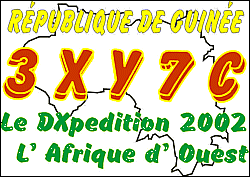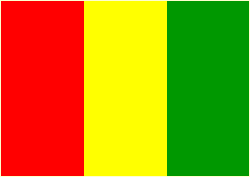3XY7C
Guinea - October/November 2002
Operation
Our DXpedition to Guinea as 3XY7C was a great success with 52480 QSOs in the log. We were on the air between Oct 30, 2002 and Nov 13, 2002. Please check our News Page.We were active with several stations on 160m through 6m on CW, SSB, RTTY, PSK31 and also make an attempt on SSTV.
A second DXpedition brought us back to Guinea in 2011 using the call sign 3XY1D making 53933 QSOs.
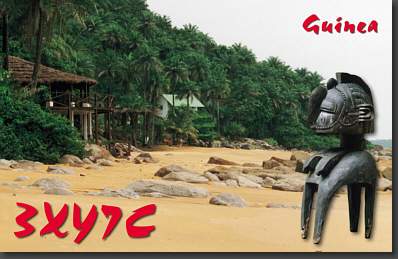
Our equipment consisted of four transceivers (2x IC 735, 2x IC 706), 2 x kW linears, a TH3 for 20/15/10, a A3WS (17/12), 2 Titanex V80E Lowband Verticals, a GP for 40/30 and a R7 Multiband GP.
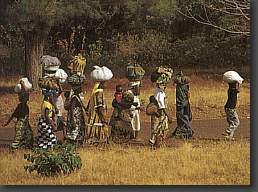 |
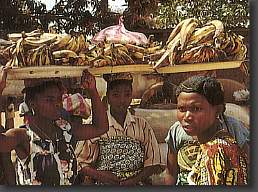 |
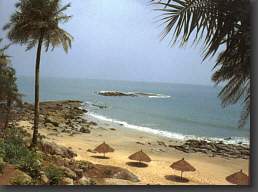 |
||
| Note: This is NOT the DXpedition crew! |
Team
Our experienced crew was:
- DJ6TF, Tom
- DJ7UC, Dirk
- DK1BT, Manfred
- DL4WK, Wolf
- DL7UFR, Frank
- DL7BO, Tom
- DL7DF, Sigi
Pilot for this DXpedition was Bernd, DF3CB.
Sponsors
We would like to express our sincere thanks to all our sponsors for this DXpedition:
About Guinea
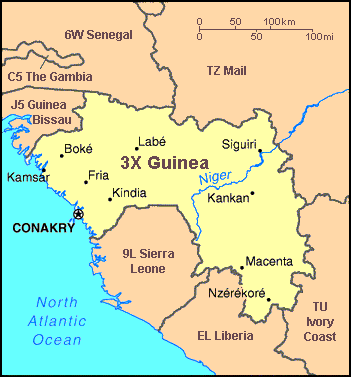 |
|
| Country name: | Republic of Guinea (short form: Guinea) |
| National capital: | Conakry |
| Location: | Western Africa, bordering the North Atlantic Ocean, between Guinea-Bissau (J5) and Sierra Leone (9L), 11 00 N, 10 00 W |
| Area: | 245,860 sq km (slightly smaller than Oregon) |
| Land boundaries: | 3,399 km |
| Coastline: | 320 km |
| Climate: | generally hot and humid; monsoonal-type rainy season (June to November) with southwesterly winds; dry season (December to May) with northeasterly harmattan winds |
| Terrain: | Generally flat coastal plain, hilly to mountainous interior: Highest point: Mont Nimba 1,752 m |
| Natural resources: | bauxite, iron ore, diamonds, gold, uranium, hydropower, fish |
| Population: | 7,477,110 (July 1998 est.) |
| Religions: | Muslim 85%, Christian 8%, indigenous beliefs 7% |
| Languages: | French (official), each tribe has its own language |
| Independence: | 2 October 1958 (from France) |
| Economy: | Although possessing major mineral, hydropower, and agricultural resources, Guinea remains one of the poorest countries in the world. The agricultural sector employs 80% of the work force. Guinea possesses over 25% of the world's bauxite reserves and is the second largest bauxite producer. The mining sector accounted for about 75% of exports in 1995. Long-run improvements in government fiscal arrangements, literacy, and the legal framework are needed if the country is to move out of poverty. The government made encouraging progress in budget management in 1997. Except in the mining industry, foreign investment remains minimal. |
| Reference: | www.worldrover.com/vital/guinea.html |

